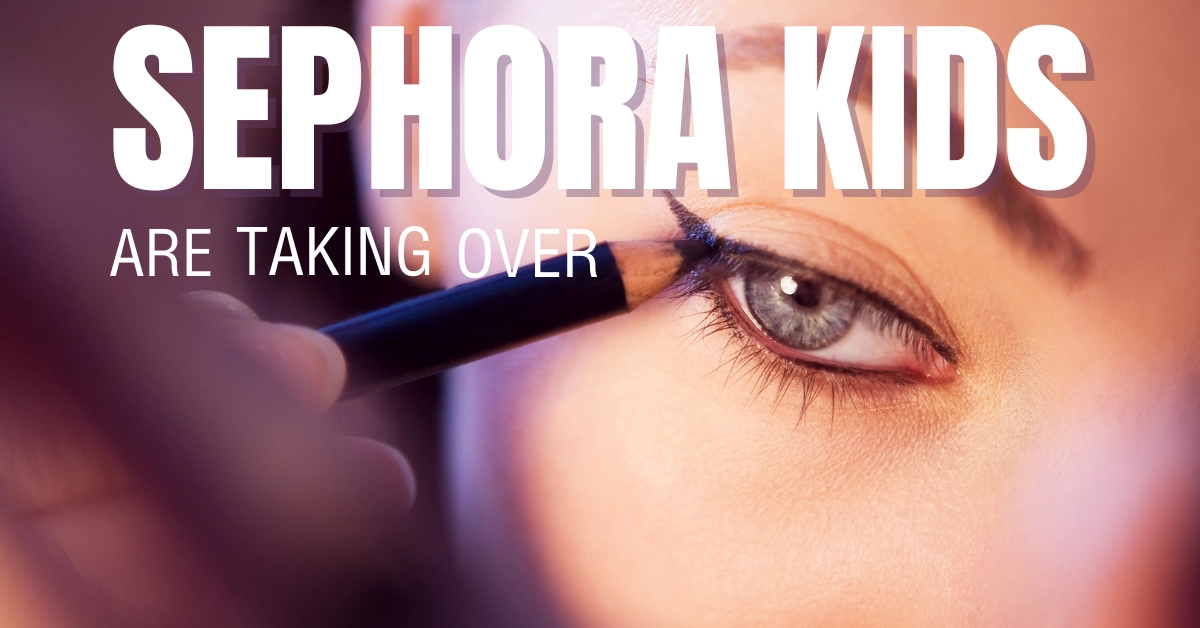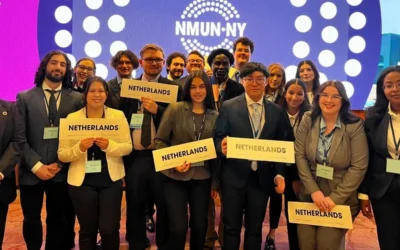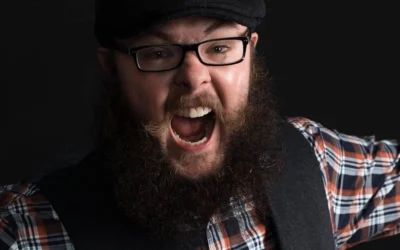Recall the early 2000s with me quickly. Chunky, bedazzled Nokias that could withstand the force of one thousand drunk partygoers when you (inevitably) lose it on the dance floor. The beauty of opening Myspace to the embedded sounds of Britney Spears echoing out of the 10-thousand lb, cube-shaped desktop your parents had sitting in the kitchen.
Mood rings, butterfly clips, that specific Pandora charm bracelet, and the cool belly button piercing your older cousin had. All these things are reminiscent of a different time and, for some of us, represent milestones in our childhood.
I remember getting my first memorable introduction to make-up in Grade 5. Previously, I enjoyed the hot pink, glittery, several-layer, fold-out Claire’s brand make-up kit that every girl was gifted in 2008. You know the one. Every eye shadow is, for some reason, sparkly with zero pigment. The lipsticks came in every shade imaginable but tasted faintly like plasticized sugar. I would humbly classify myself as somewhat of a professional in the Claire’s make-up realm. But, when it came to the real thing, I was uneducated. Looking back, this seems normal for a nearly 13-year-old. Especially for me as someone who rejected femininity outright. However, when I met a girl in middle school who could do eyeliner with her eyes closed, I was infatuated.
We were sitting outside the school theatre waiting for some performance — probably a Christmas concert or another arduous school event. Whatever it was, she had agreed to do my makeup beforehand. Obviously, I was no eyeliner expert. So, when she started, I assumed it would be just like when she did it on herself. One and done, as they say.
But, it wasn’t.
She would draw a line, mumble, and wipe it off. This cycle continued until finally, with an exasperated sigh, she gave up. I was curious as to what happened, and so I asked.
“Hey, are you okay?”
And she responded.
“Ugh… you have hooded eyes. It’s just too hard, sorry.”
Of course, this was 10 years ago, so this is a dramatic retelling of the scenario. However, the sentiment remains. I was different. Something made me incapable of replicating her beauty. Something about me. What did having hooded eyes even mean? Why did it make me feel lesser? She didn’t say a single negative thing about me, and yet it hurt.
This resulted in a continuous rejection of femininity throughout my adolescence because, honestly, who wants to be like everyone else? Especially when trying to be like everyone else makes you feel worse.
It’s been a long time since the days of Claire’s, well before the age of influencer marketing. The convergent media cycle has created an even more rabid fandom of beauty fans. This is something we see frequently in this era of influencers. Children are accessing social media at younger ages, seeking to develop their personal identity online. According to the National Library of Medicine, social media usage and internet access soared during the COVID-19 pandemic, specifically in adolescents. This connection allowed children and adults to maintain their relationships, creativity, and personal interests in isolation. The rise of super-viral TikTok trends also opened the doors for global connection during this period. Think of whipped coffee or fancy ice cubes; thanks to the internet, we were arguably more united over these forms of creativity than ever before.
However, this uninterrupted internet access poses a great risk to the younger population. Children are being exposed to unfiltered advice pertaining to their beauty, diets, and personal presentation from influencers who are more than double the age of their audience. Often, these influencers are marketing for brands with no outward admission of a brand deal outside a meagre #ad. The posts represent these products as a “must-have,” resulting in children falling victim to dishonest advertising practices.
“They’re perceiving beauty from the perspective of these influencers and celebrities, which really perpetuates this very narrow standard of beauty that… that is not realistic,” says Maria Di Stasio, a MacEwan assistant professor in the human services and early learning department. “We’re talking about kids between the ages of eight and 15, eight and 12, and they’re still at a stage where they need guidance.”
Di Stasio highlights the difficult balance between allowing children personal freedom and the importance of healthy development, specifically regarding social media.
“I think it’s important that we let them explore their identities because that’s a part of development where exploration is very important,” says Di Stasio, who recommends open communication between children and adults to discuss topics like self-esteem and self-worth.
This issue does not happen in a vacuum. Unfortunately, social media is only one piece of the puzzle. When we look at these influencers marketing to younger generations, it is important to understand where the message is coming from.
“I was in marketing for a long time. So, I get it. I get why they’re doing it,” says Jaime Linau, an aspiring make-up artist. “This is what the kids are wanting, and therefore the brands are like, got it. That’s what we’re going to do. We’re going to feed into this because it’s working.”
Linau has been doing make-up since adolescence before make-up sprouted into a career choice. She discusses how her journey with mak-eup shifted from a catalyst of social acceptance to a creative outlet.
“I think when I started doing princess parties at 19 is when I realized, ‘Hold up. This is actually so fun.’ … And then all of a sudden I started appreciating that more than the societal acceptance… The love for make-up really sprouted and then trumped the love for societal acceptance.”
Linau, much like Di Stasio, acknowledges the potential impact that inaccurate representations of beauty can have on younger populations.
“Social media still sucks, and I hate it, and it makes me cry every time I think about kids in junior high seeing these filters and having their skin blurred when they’re, like, 13. Their skin is already perfect. They don’t need to blur it, but that’s what they’re seeing now. They’re growing up, and they’re programming their own brains that their natural look is imperfect, and that breaks my heart.”
I remember this during my own adolescence as well, even before the rampant popularity of filters and anti-aging serums. I would log onto Instagram to see another Jenner post their perfect skin, only to turn to the mirror and end up disappointed with the face looking back at me. The idea of not being good enough was taught to me before I could even comprehend what it meant. This sentiment echoes through the Gen Z population.
Abbey Herbrik, a MacEwan fine arts student, realizes now that feeling insecure was ridiculous but common for people to compare themselves to others their age.
“I think with young girls and women that are growing up in a society where social media is so present, it’s extremely dangerous for their mental health and self-worth,” Herbrik says. “Constantly comparing themselves to others they see on social media that are often presenting a false perception of their lives can greatly affect how they view themselves.”
This narrative that women and girls must be at their best at all times is nothing new. There is an idea within society that women expire after a certain age, and that they no longer provide any value once their younger forms of beauty have dissipated into a more mature look. We have all witnessed Leonardo DiCaprio’s dating pool capping at age 25, and this is, unfortunately, a common perception of women.
I had a conversation with a Sephora employee who wished to remain anonymous. Sephora employees are bound to a contract prohibiting them from speaking without corporate approval. “It breaks my heart because Sephora calls a lot of these women ‘mature clients.’ They like to say it’s to avoid calling them ‘older.’ I always feel a little condescending or patronizing when I have to call out on my headset for ‘someone to help my mature client over here,’” says the Sephora employee.
“Sephora tells us to educate clients on these things… but the marketing takes over.”
Another employee acknowledges the direct impact of this marketing on the younger population.
“Children lack the critical thinking skills to acknowledge that the products their favourite content creator is using are different from what the average 10- [and] 15-year-old needs,” they say. “And the parents aren’t doing enough to monitor and limit their consumption of these promotions/ads and to educate their young girls about beauty standards and what they actually need versus what they want.”
Social media isn’t going anywhere anytime soon, so how do we begin preparing the next generation to face these increasingly hard-to-meet standards? Di Stasio believes the solution lies in defining beauty.
“Like what is beauty? Especially when we’re talking about children. Young age, elementary age, they’re still concrete thinkers.”
“We have to teach children from a very young age that they need to emphasize their inner qualities. … It’s not necessarily by the beautiful clear skin that you’ll have but it’s more about. Who you are as a person. And so, if we could keep reinforcing that positive body image by emphasizing those inner qualities that children have, then I think that we can get a lot further in developing children and teenagers who are confident.”
Di Stasio believes the best remedy for the potential negative influences of social media is to reinforce the value of inner beauty from a young age. Teaching kids to ask themselves what qualities they value will aid in developing a strong sense of self, mitigating any outside influences children may be exposed to. It matters not how they look but how they wish to be remembered.
I can’t help but close this off by saying that I am grateful that I have the privilege of aging. With every wrinkle, stretch mark, blemish, or eye bag, I witness my growth as a person. I can examine my laugh lines in the mirror and pinpoint which jokes created them and which friendships maintain them. It took me years to come to terms with what aging meant, and even then, I still struggle some days. But, even on the bad days, I am grateful to be alive.
As Di Stasio put it, “aging is a beautiful thing.”
And goodness, aren’t we all lucky to grow?
Graphic by Leanna Bressan





Great work with this Amanda. As a fellow hooded eyed woman, thank you! 🙂
Hooded eyes band together 🤝🏼 amazing article!!